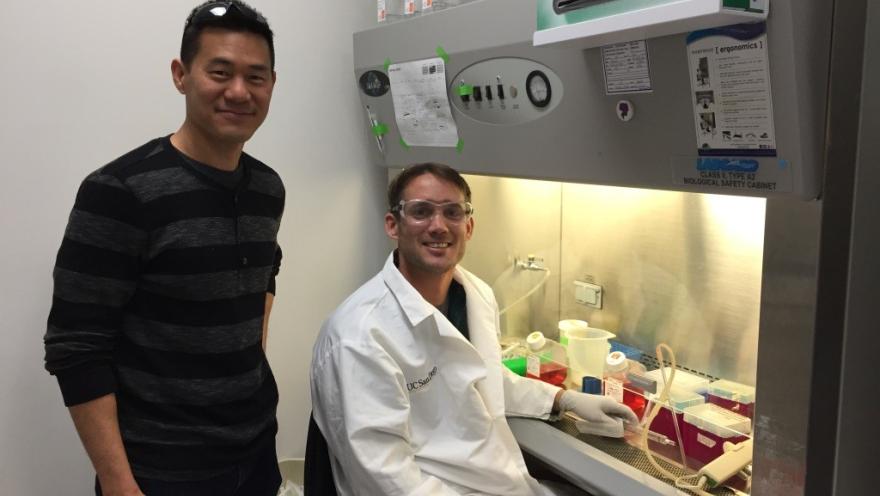Dr. Gene Yeo from the University of California San Diego recently published a paper in the journal Cell, describing his important work uncovering the role of stress granules (SGs) in ALS. His research is supported by The ALS Association Investigator-Initiated Grant program, with donations from the ALS Ice Bucket Challenge.
We sat down with Dr. Yeo to hear how he and his team identified SG components that they found vary by stress and cell-type.
SGs are cytoplasmic protein-RNA aggregates (protein clumps) that assemble in response to cellular stress and, if not cleared properly, cause toxicity in cells.
Dr. Yeo and his team went on to identify specific SG proteins that modify ALS-mediated toxicity in fly models of neurodegeneration, which are potential ALS therapeutic targets.
What are stress granules and why are they important?
Stress granules are a type of protein aggregate, which are assemblies of proteins that like to interact with RNA that condense in tight clusters when cells respond to cellular stresses. Stress granules act as storage sites for RNAs that are not made into proteins until the stressful conditions dissipate.
Researchers are working to understand the biology behind stress granules in neurodegenerative diseases, including ALS. Mutations within genes encoding stress granule-enriched RNA binding proteins have become implicated in ALS.
Also, there is emerging evidence that failure to clear protein-RNA aggregates in cells is a key step in disease in both people living with familial (inherited) and sporadic (not inherited) ALS.
What is the impact of your paper on the ALS field?
In our paper, we, in collaboration with Dr. Eric Lecuyer (Montreal Clinical Research Institute (IRCM)) and Dr. Eric Bennett (University of California San Diego), utilize two different ways to comprehensively identify known and novel (>150 previously uncharacterized) proteins within these stress granules in cell-lines from healthy individuals normal and people with ALS. We were excited to see that stress granules in neurons from people with ALS had clear compositional differences from healthy individuals.
Once we had identified the protein components, we tested the hypothesis that depleting or modifying their levels will affect the disease characteristics in animal models of familial ALS harboring ALS mutations TDP-43, FUS, and C9ORF72. In collaboration with Dr. Fen-biao Gao (University of Massachusetts Medical School) and collaborators at Biogen, we were delighted to see that modifying some of these proteins reversed neurological deficits in these animals.
How did funding from The ALS Association support this project?
The ALS Association awarded an Investigator-Initiated grant starting in August 2016 to support the discovery of stress granule components in models of ALS. In the grant, we proposed that the components of stress granules are not comprehensively known and, if found, some of these are likely to be novel therapeutic targets in ALS.
How will you and your colleagues further this project?
We are currently completing our efforts to evaluate which other protein components stop or slow down disease phenotypes in vitro in flies. Then we will seek funding to pursue these in mice models. We are also seeking funding to identify ways to develop drugs that target these proteins for therapy.
To learn more about The ALS Association progress and monetary commitments since the 2014 Ice Bucket Challenge, please visit the Ice Bucket Challenge Progress site.
Paper Citation
Context-Dependent and Disease-Specific Diversity in Protein Interactions within Stress Granules.
Markmiller S, Soltanieh S, Server KL, Mak R, Jin W, Fang MY, Luo EC, Krach F, Yang D, Sen A, Fulzele A, Wozniak JM, Gonzalez DJ, Kankel MW, Gao FB, Bennett EJ, Lécuyer E, Yeo GW.
Cell. 2018 Jan 25;172(3):590-604.e13. doi: 10.1016/j.cell.2017.12.032.


Join the conversation. Please comment below.